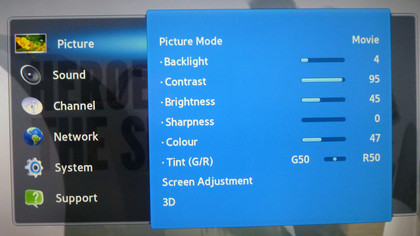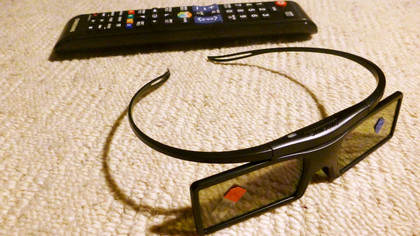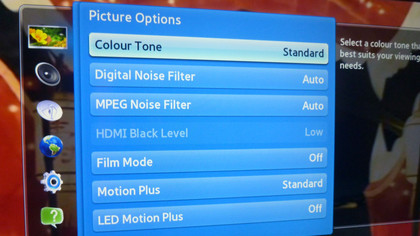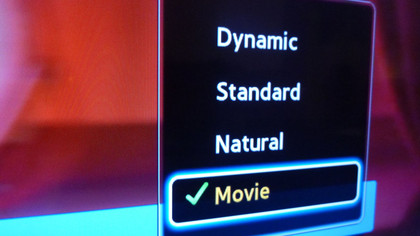Why you can trust TechRadar
We're straight into some 3D, courtesy of the Samsung Explore 3D app's Machu Picchu 3D. After syncing quickly with the 3D specs, the Samsung UE46ES6300 renders the Peruvian 'sky village' wonderfully, with only the odd shimmer visible on the edges of swooping camera shots.
Contrast through the 3D specs appears wide, and we're briefly transported to another world where crosstalk is yet to be invented.

Next up, a short of 3D Sun from Yabazam! 3D immediately impresses with a sequence of a solar wind rushing across a satellite - and not a trace of crosstalk.
The next shot, of a tent below sweeping aurora, is more troublesome; our eyes were unable to decipher exactly how the background and foreground related to each other.

Perhaps that's the source material, because elsewhere the Samsung UE46ES6300 deals with 3D very, very well.
To get the full benefit of active shutter 3D, we engaged Prometheus - cue a fabulously rendered prologue of panoramic Isle of Skye landscapes. Arguably it's when the cameras get in close - to a waterfall, and rushing above a gushing river, that the Samsung UE46ES6300 can show off its 3D depth, detail and clarity to the fullest.

That said, black areas of shots aren't as 3D as they could be, with shadow detail rolled-over by forced black. We've seen better contrast, and though colours appear somewhat muted, that's generally a positive for most movies.
Back in 2D, but still in Prometheus, we immediately noticed more problems with contrast. As well as black appearing less convincing and even more crushed, black levels and bold colours visibly fade if the Samsung UE46ES6300 is watched off-axis. Stray from the centre and grey begins to dominate.

If you watch in a total blackout you will notice these details, as well as some blotchy light output from the Edge-mounted LEDs, though for most people, these issues won't be deal-breaker.
Colour is excellent (though steer clear of Movie Mode, which tends to remove too much lustre) and detail is high, though slightly affected by motion.

Motion Plus is an acquired taste, though it's not as powerful as on some TVs, and can be comfortably left on its Standard setting without creating much in the way of video nasties.
Standard definition is handled well, too, with a sheen of slight softness applied to everything. It's like a warm blanket to dodgy quality video, though it can't prevent a fizz around the edge of some moving, low-res objects.
Jamie is a freelance tech, travel and space journalist based in the UK. He’s been writing regularly for Techradar since it was launched in 2008 and also writes regularly for Forbes, The Telegraph, the South China Morning Post, Sky & Telescope and the Sky At Night magazine as well as other Future titles T3, Digital Camera World, All About Space and Space.com. He also edits two of his own websites, TravGear.com and WhenIsTheNextEclipse.com that reflect his obsession with travel gear and solar eclipse travel. He is the author of A Stargazing Program For Beginners (Springer, 2015),

